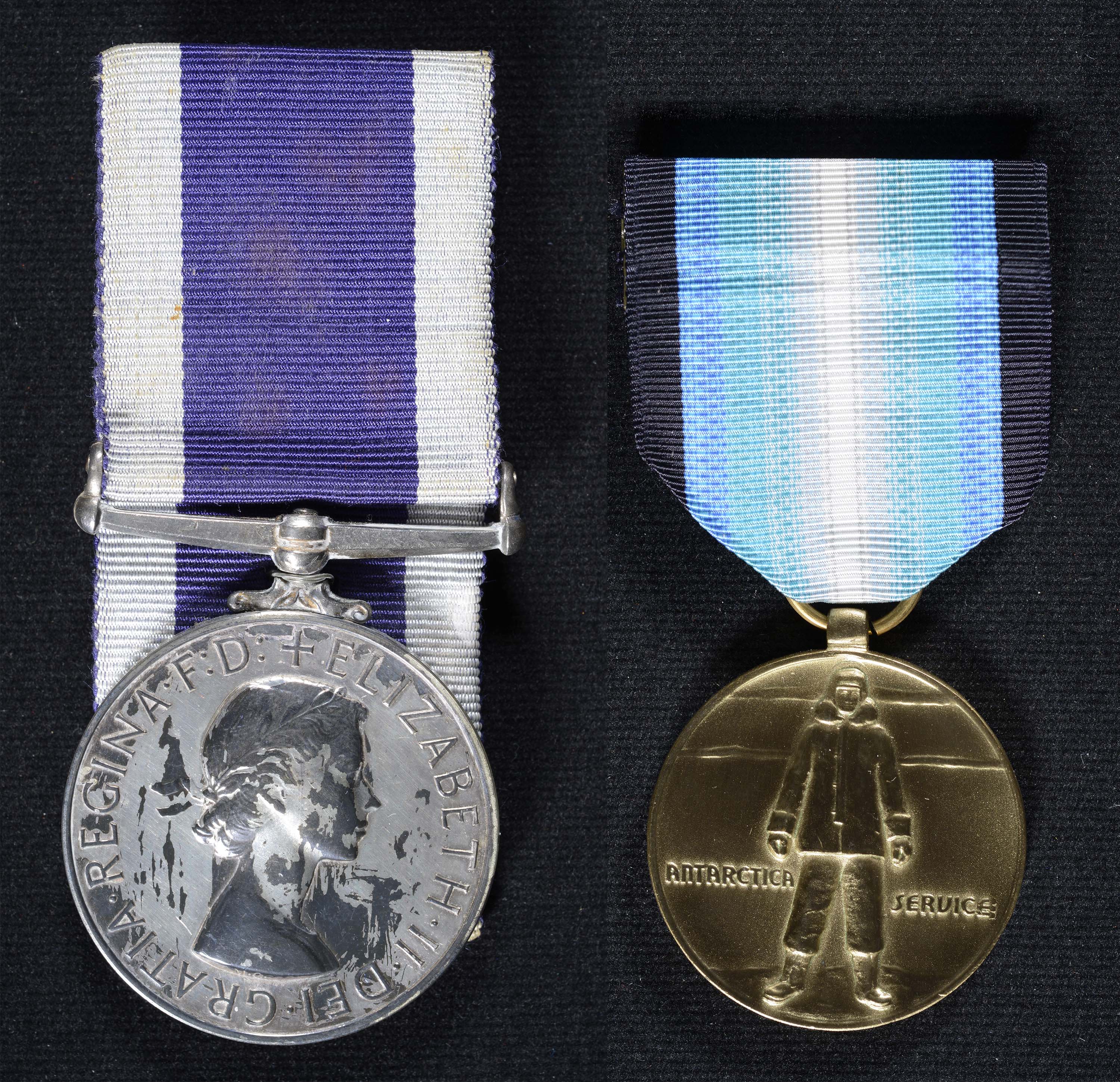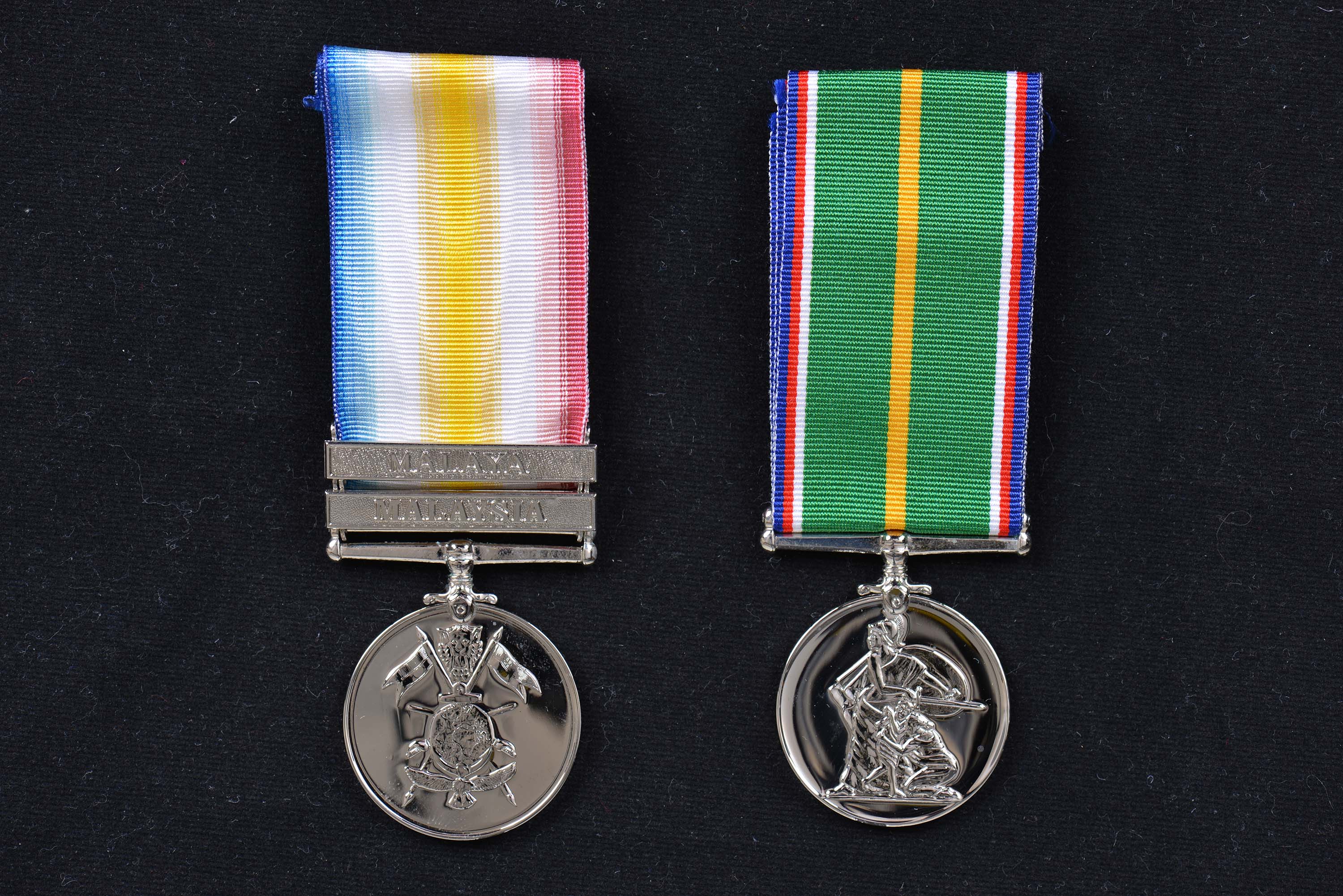

Display No. 14D
GOSSE, Brian Robert
Brian Gosse joined the Royal New Zealand Navy in 1954. He trained as a Junior Writer in the shore establishments HMNZS Tamaki and Philomel and was promoted to Ordinary Writer in February 1956. Throughout his career he progressed through his trade receiving his warrant to become a Warrant Officer Writer in August 1973.
During his career Gosse served in numerous RNZN ships and shore establishments including HMNZ Ships Irirangi, Wakefield, Taranaki and Lachlan and for the Commodore, Auckland (COMAUCK). He served in HMNZS Royalist during the ship’s fourteen month deployment to Southeast Asia in response to the Malayan Emergency, the ship bombarding terrorist camps in July 1957 and February 1958. Gosse was also on board HMNZS Pukaki during trips to the Antarctic in 1964-1965 for Operation Deep Freeze. He was discharged from the RNZN in March 1977.
Awarded medal(s)
Medal Description [Left to Right]:
Royal Naval Long Service and Good Conduct Medal
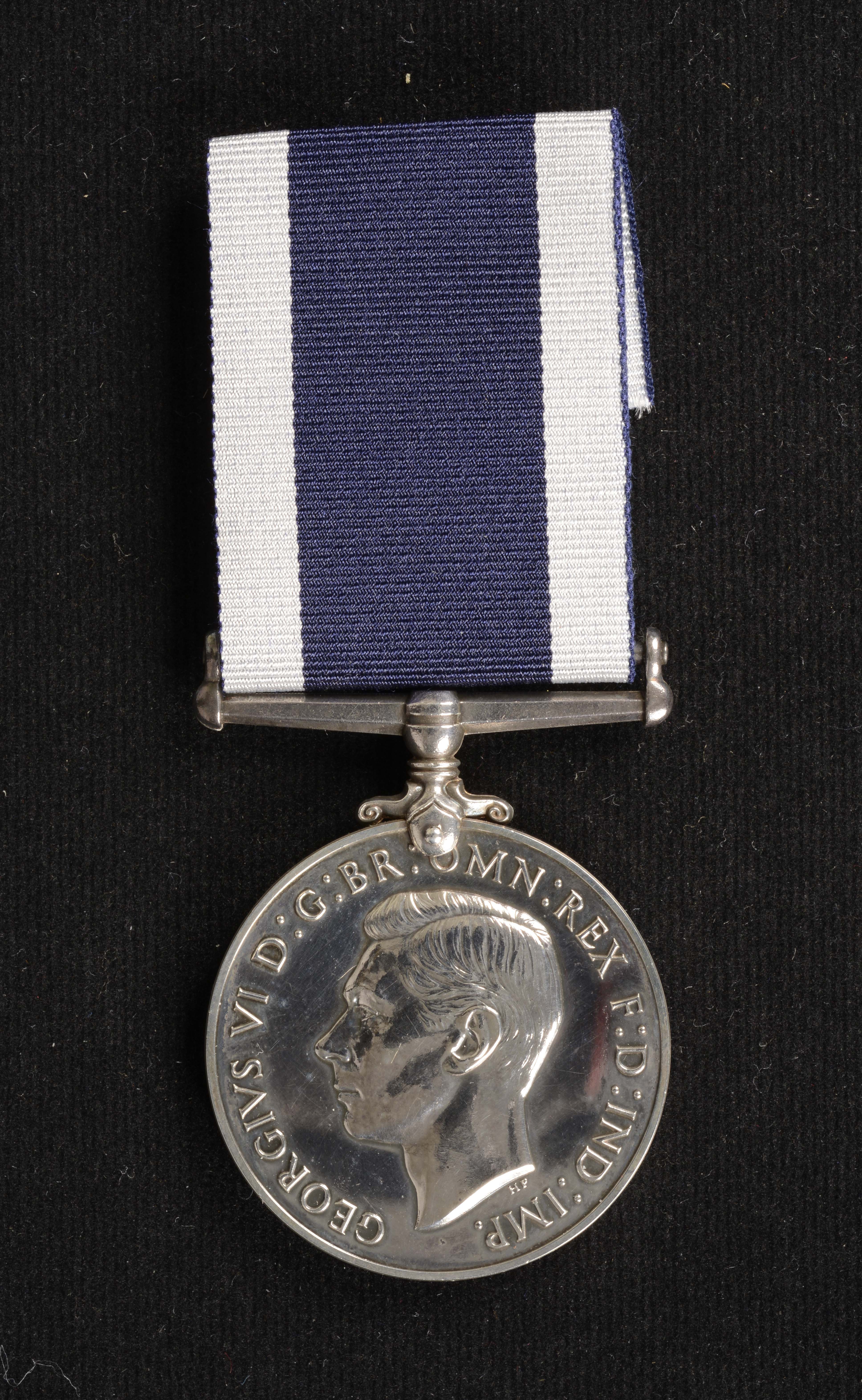
Awarded to ratings who have served a minimum of 15 years in the Royal Navy (previously 21 or 10 years), the first version of this medal was instituted in 1831 and it is still issued to Royal Navy personnel today. It features the reigning monarch’s head on the obverse and HMS Victory on the reverse with the recipient’s details engraved or impressed on the edge of the medal. This medal was also issued to eligible personnel serving in the New Zealand Division of the Royal Navy from 1921-1941 and then to Royal New Zealand Navy personnel from 1941-1981. In 1985 a New Zealand Royal Navy Long Service and Good Conduct Medal was introduced bearing the exact same design.
Antarctica Service Medal
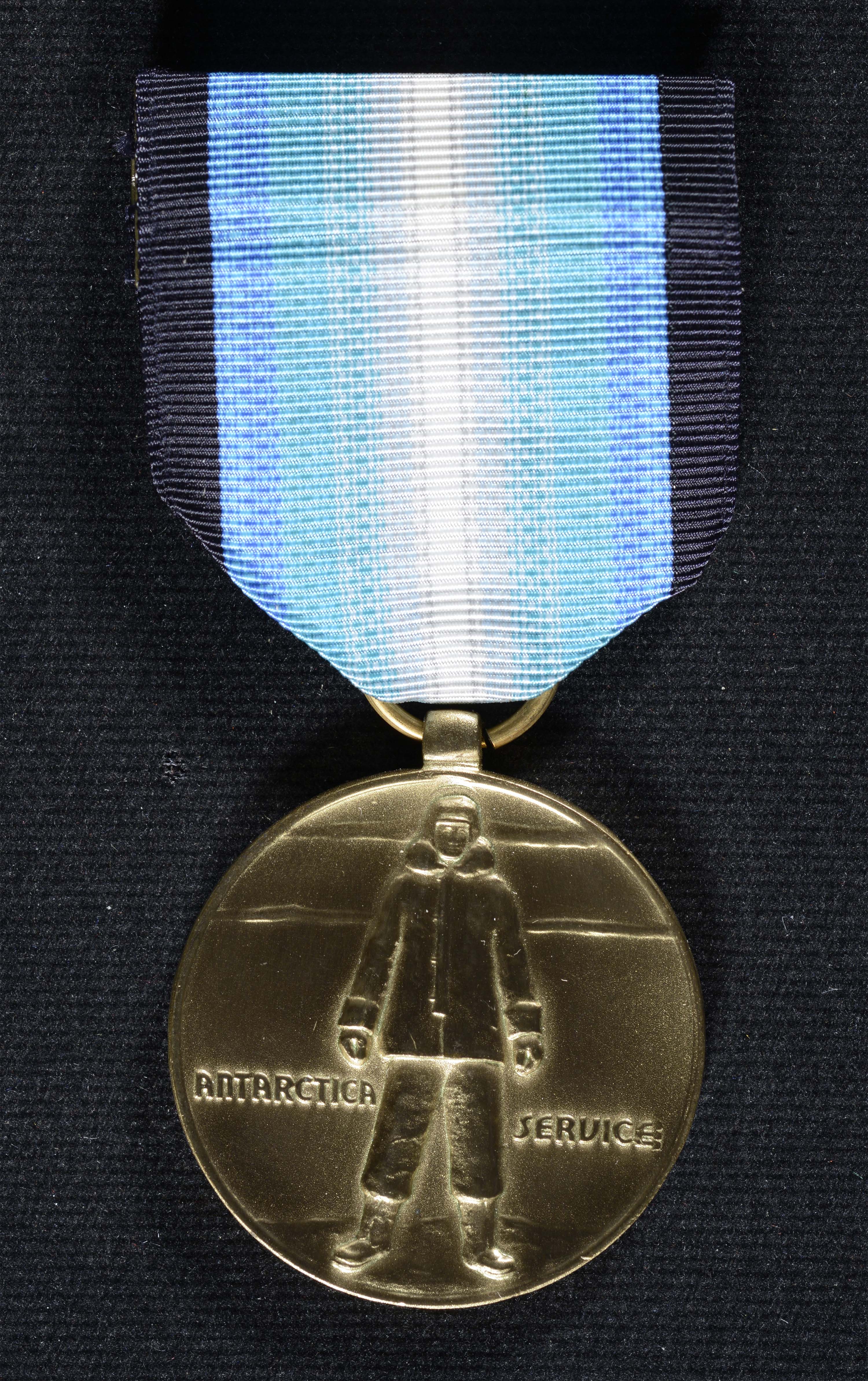
Established by the United States Congress in 1960. It is a military award and was designed to replace several commemorative awards which had been issued for previous Antarctica expeditions from 1928 to 1941. The medal may also be awarded to US civilians and citizens of foreign nations, who participate in a US Antarctica expedition on the continent, at the invitation of a participating US agency. The ribbon’s outer bands of black and dark blue represent five months of Antarctic darkness; the centre portion, by its size and colours, is graded from medium blue through light blue and pale blue to white – symbolises seven months of the solar illumination and the Aurora Australis.
Special interest medal(s)
Display No. 26I
Medal Description [Left to Right]:
Foreign Service Commemorative Medal
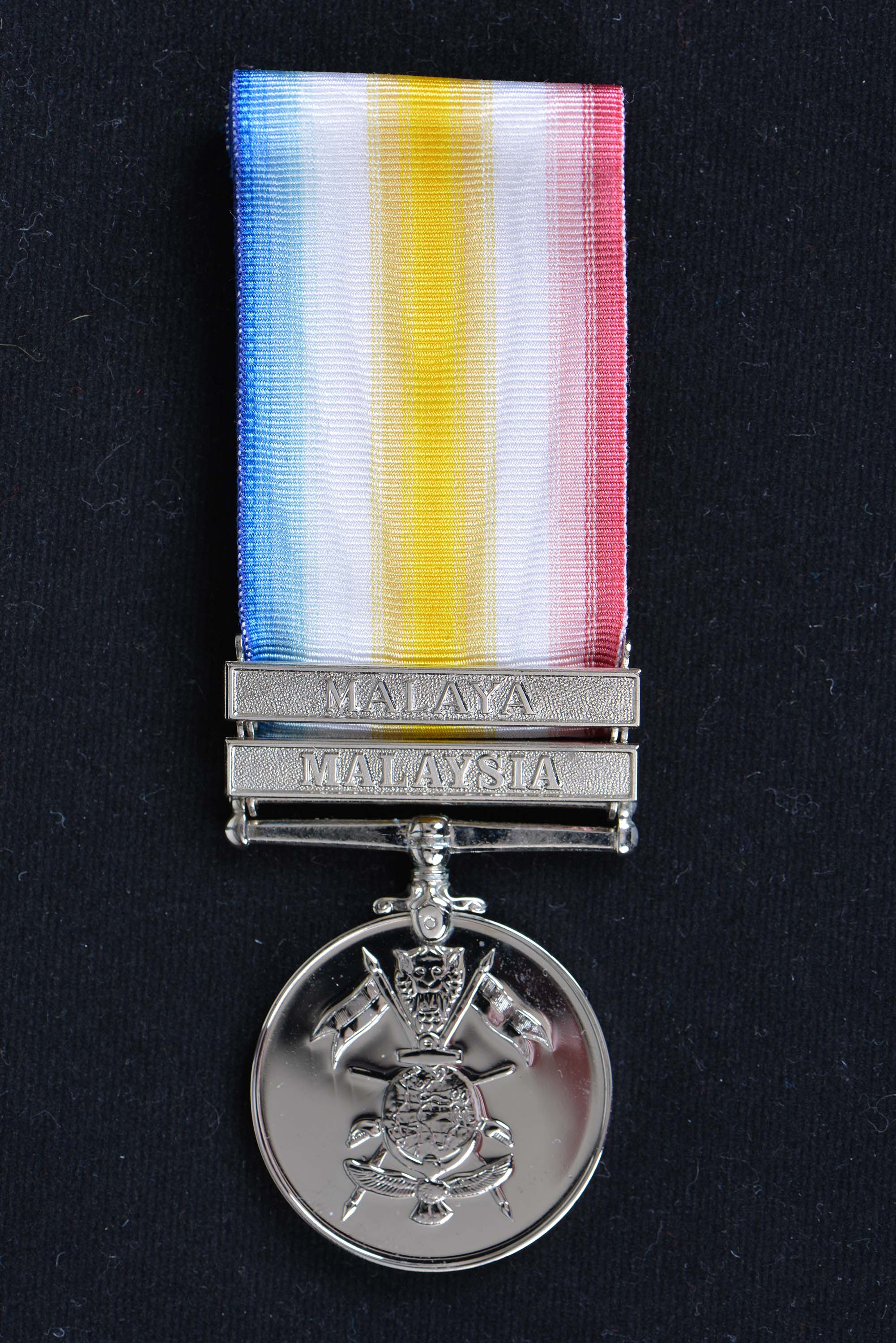
This is an unofficial commemorative medal that could be purchased. Some unofficial commemorative medals were created to represent service that a government chose not to recognise with an official medal. This one is for foreign service with clasps that represent the area served in, Malaysia and Malaya.
National Defence Medal
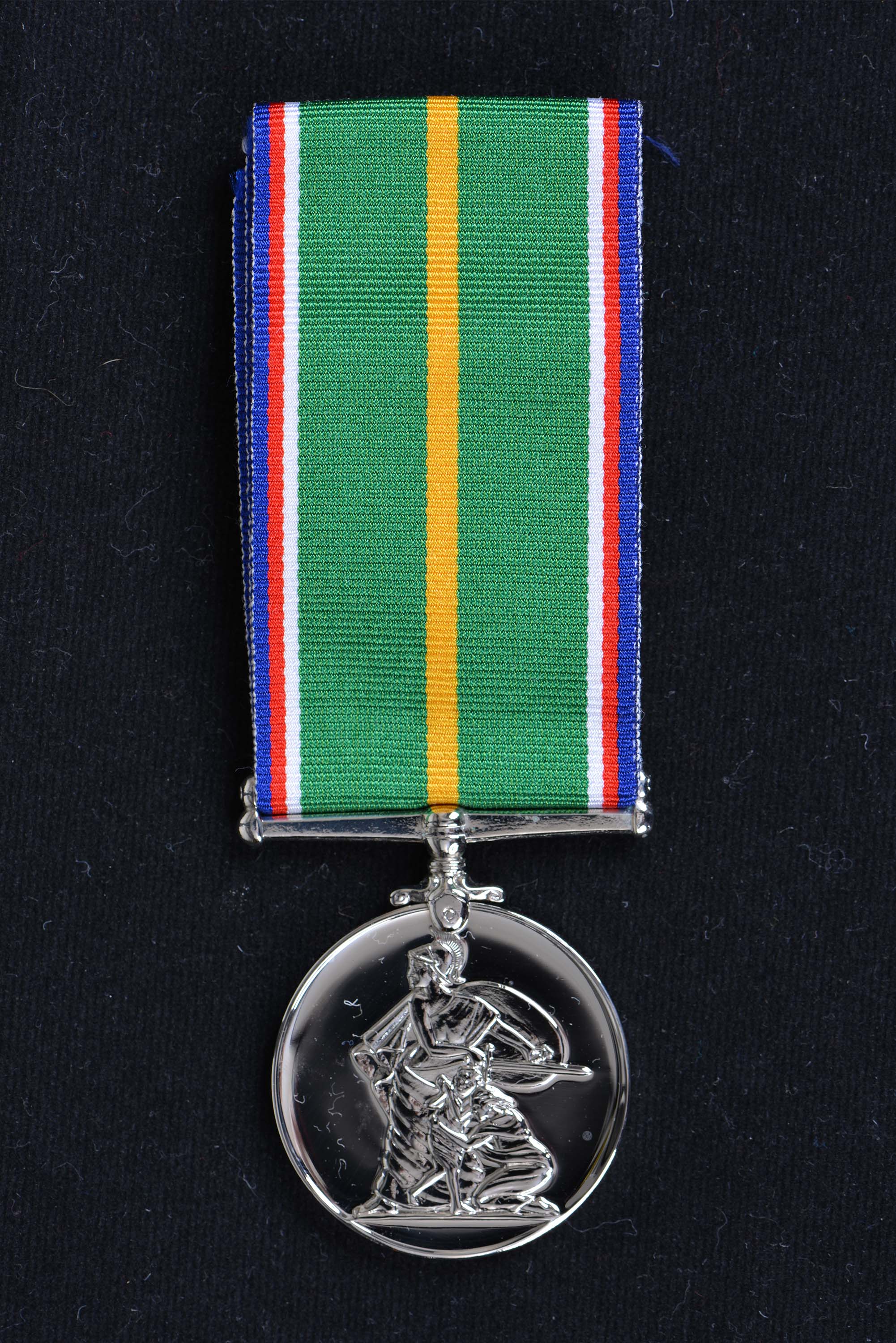
This is an unofficial commemorative medal that could be purchased. Some unofficial commemorative medals were created to represent service that a government chose not to recognise with an official medal. The National Defence medal is available to all British Commonwealth and allied ex-servicemen and women, both regular and reserve that served their homeland faithfully for a minimum of 28 days. Clasps could also be purchased to denote the country of service.

